Formal letters are part and parcel of our daily communications in business settings. No day passes without a need to send an application letter, a cover letter, a resignation letter, and other sorts of company communications. So, knowing how to write a professional formal or business letter is a must.
Any formal letter should be readable, precise, short, and error-free to convey the person's professionalism.
So, below mentioned some tips on writing a formal letter, its format, outline, and communication medium.
What Is a Formal Letter?
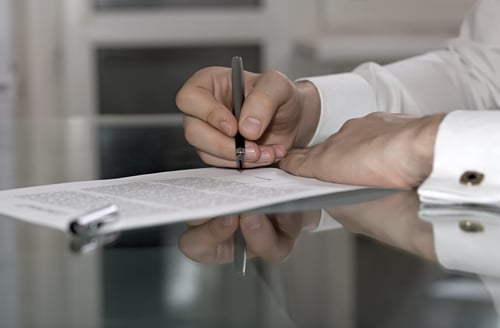
What Are the Different Forms of Formal Letters?
- Business Letters
- Appointment Letters
- Experience Letter
- Offer Letter
- Resignation letter
- Invitation letter
- Complaint Letter
8 Essential Elements to Include in a Formal Letter
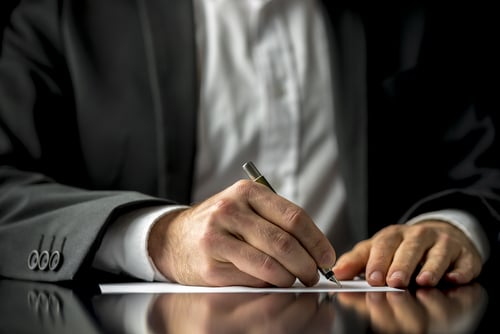
- Explaining the reason for sending the formal letter is essential in every formal letter.
- Contact information of the sender and the recipient are also important; they include:
- Full name
- Job title
- Company
- Address
- City, state, ZIP Code
- Phone number
- Email address
- Date
If you put your contact information on the letterhead, your business letter should begin with the date.
- Recipient Address
- Complete name
- Company Address City, state, and ZIP Code
- Greeting
If you don't know his name, you can use "To whom it may concern."
And if you know him well, you can use Dear+ his name.
- Letter Body
The second paragraph: explain your reasons and provide some more details
The last section: restate why you are writing this letter and thank the recipient for his time reviewing your request.If appropriate, it should also politely ask for a written response or for the opportunity to arrange a meeting to discuss your request further.
This is the essential part of the business letter. Extra lines can be used between paragraphs, after the greeting, and above the concluding greeting. For clarity, use single-line spacing.
- Closing
- Sincerely
- Cordially
- Best Regards
- Best Wishes
- Signature
Optional Sections to Add to Your Formal Letter!
If any documents are attached to your email or formal letter, you can mention
in a line that you are attaching X file for reference. Also, in case it's a
sales email, you have to add a CTA sentence by the end of your letter.
What Is the Best Format for A Formal Letter?
A formal letter must be readable and to the point. Here are some things to consider while formatting your formal or business letter:
- Indent or block: All letter parts are left-aligned in the block format. If you prefer to utilize an indented format, position your address, date, closing greeting, and signature to the right. The remaining items will be placed to the left.
- Font: Use a professional typeface like Arial, Calibri, Times New Roman, Helvetica, or something similar. The size must range between 10 and 12.
- Margins: The standard is a one-inch margin on all four edges of the page. To distinguish it from other forms of letters, raise it to one and a quarter inches.
- Spacing: The body of the letter should be on a single line. Extra lines should be added after your address, date, recipient address, and greeting. Also, add a line before the last greeting.
- Letter Length: Almost one-page maximum.
- Letter Printing: All formal or business letters must be printed on plain white paper.
Print, Edit, and Grammar Check
After you've finished writing your letter, check it and its grammar on the computer. Then print it out and read it aloud at least once more, looking for mistakes or errors. This is significant since detecting problems on a paper copy is generally more straightforward.Pay attention to formatting mistakes, like using two different fonts on the same page or forgetting a space between two paragraphs.
You also have to keep a copy of your letter; if it's written and if it will be sent by email, a copy will be saved in your sent box.
How To Address the Envelope?
Before sending your formal letter, you have to put it inside a business-size envelope. This envelope should have printed or handwritten address details. Also, your name should be mentioned in the top left corner, and your receiver address in the center. Don't forget to add a stamp.
Written Letter Format!
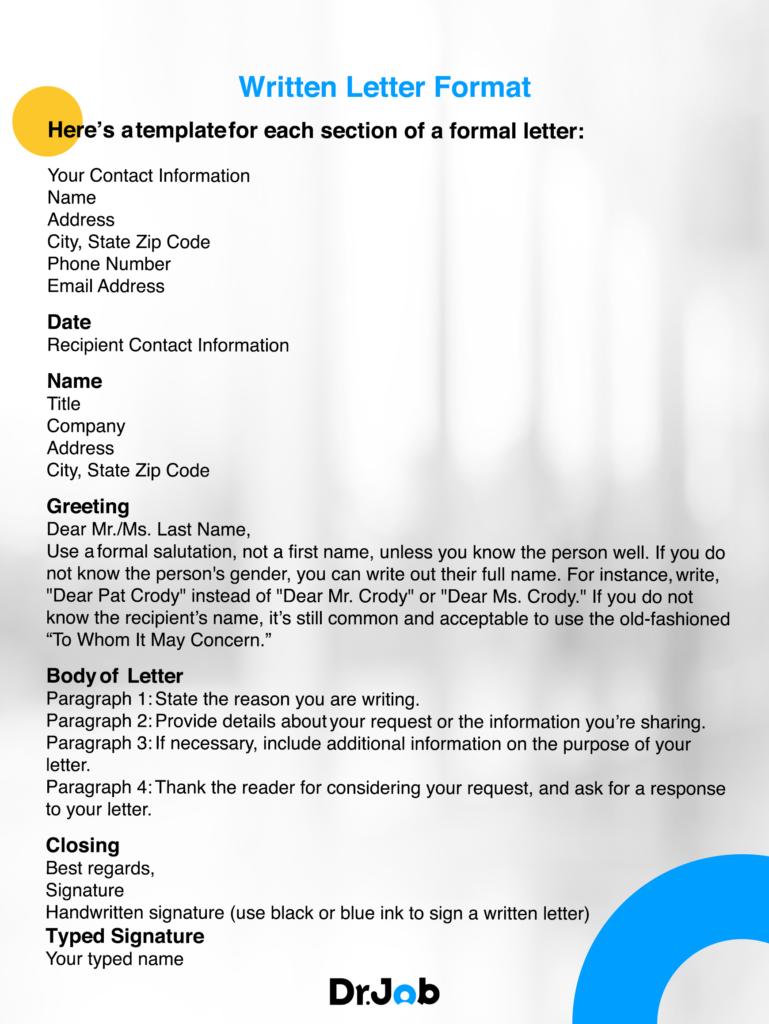
Written Letter Format Example!
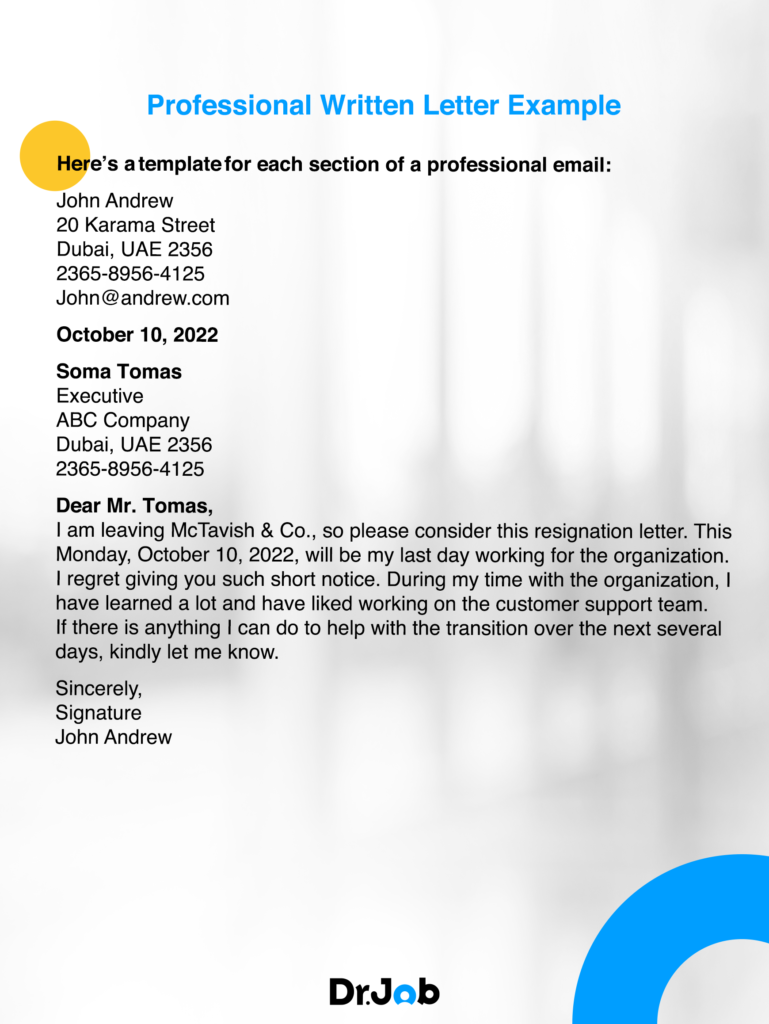
Writing a Formal Email Letter!
You must modify the format somewhat if you must send the business letter by email. In other words, your formal email letter will include a greeting, body, and signature, but you will also need to add a subject line that tells the primary purpose of the email, and you can attach files or links.
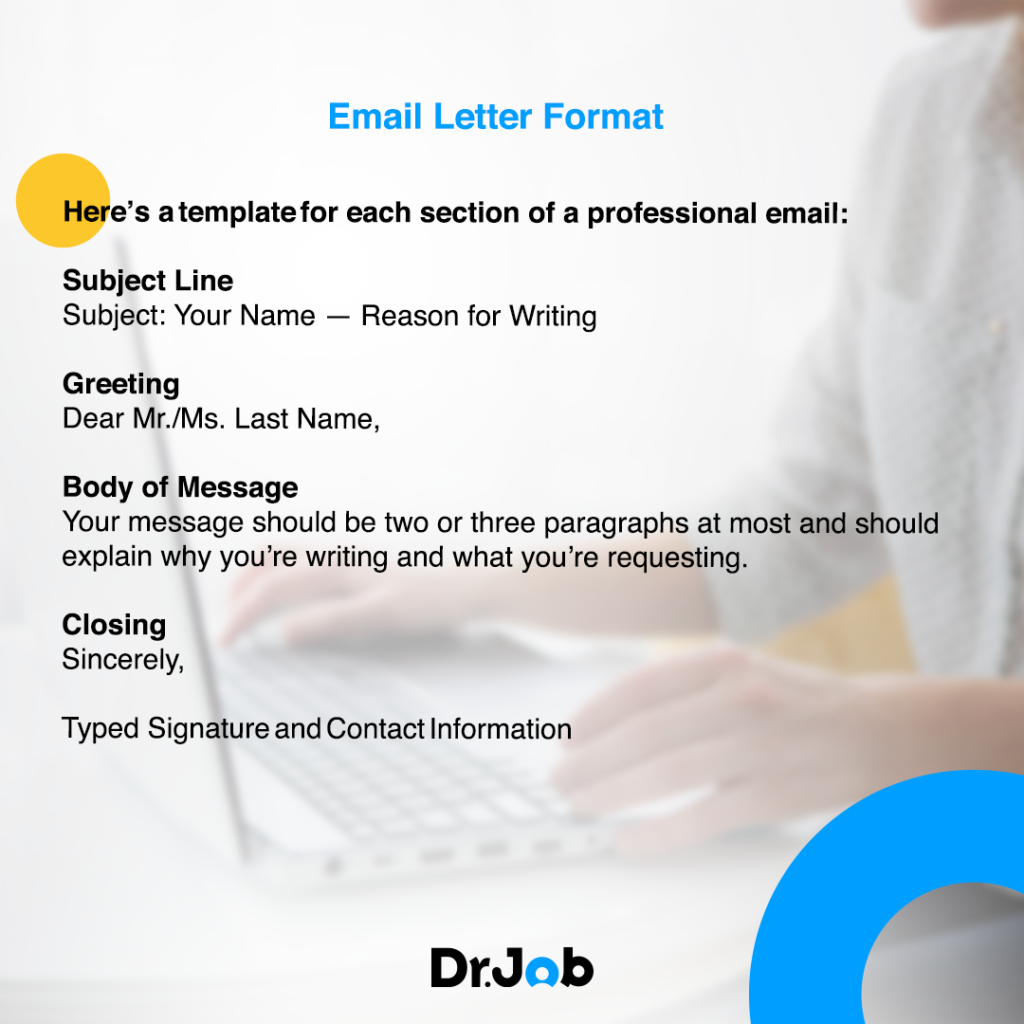
Letter Format Examples!
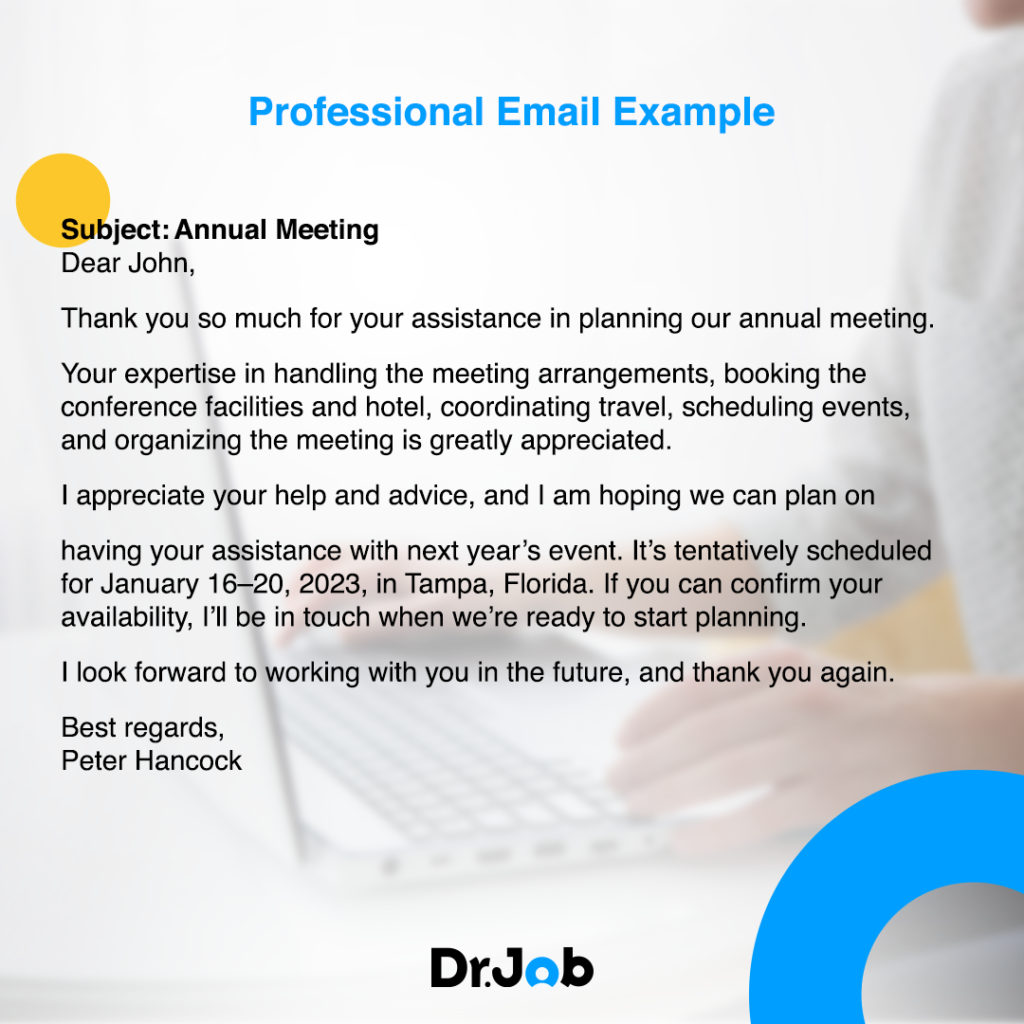
- Experience Letter Format (+Tips & Free Word Templates)|Drjobpro.com
- Resignation Withdrawal Letter: Check the Tips & Sample Emails|Drjobpro.com
- How to Write an Experience Certificate Request Letter?
- How to Write a Resignation Letter (with sample)
- Job Application Email: How to Write (Ultimate Guide)-Drjobpro.com

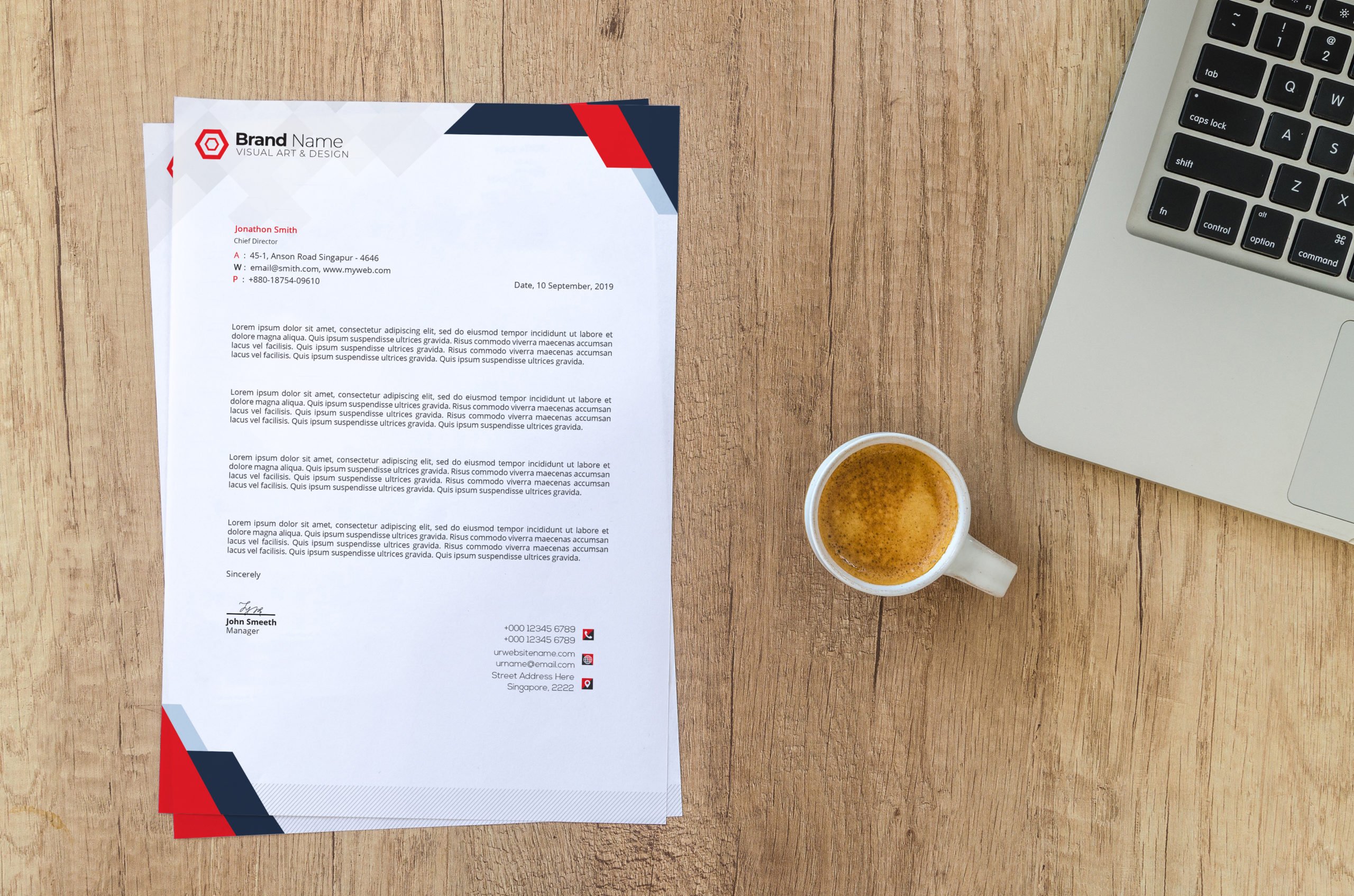






 2023-05-05
2023-05-05
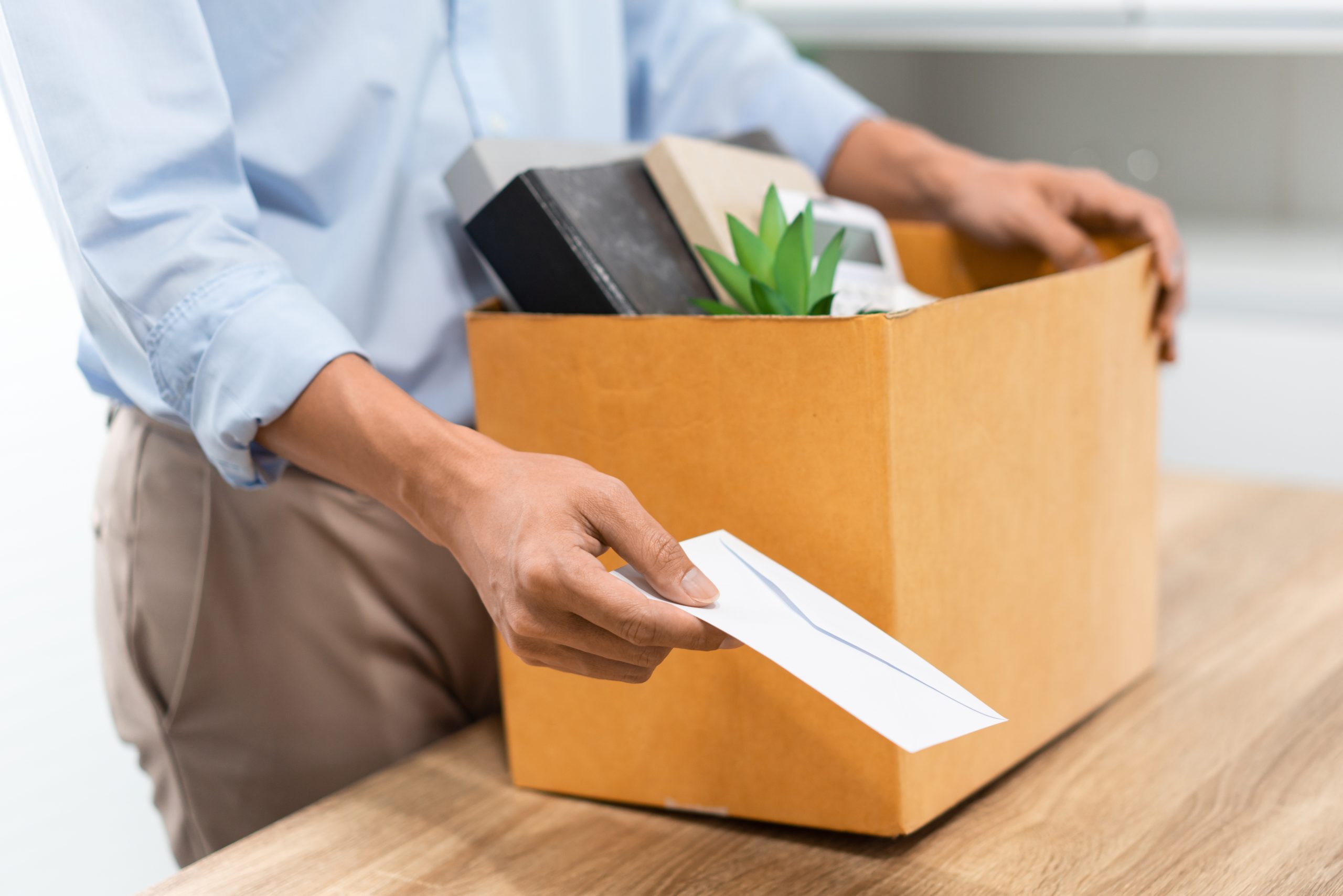 2023-04-18
2023-04-18
 2023-04-10
2023-04-10
 2023-04-03
2023-04-03
 2023-03-29
2023-03-29